Content
Kinetics: Angular Momentum
Angular
Momentum
Angular Momentum in Space
Angular Momentum in
a Plane
Rectangular Coordinate
System
Polar Coordinate System
Moment
Equations of Kinetic Motion
Dynamic Equilibrium
Kinetics: Angular Momentum
Angular momentum is another important properties in study kinetics.
Angular Momentum
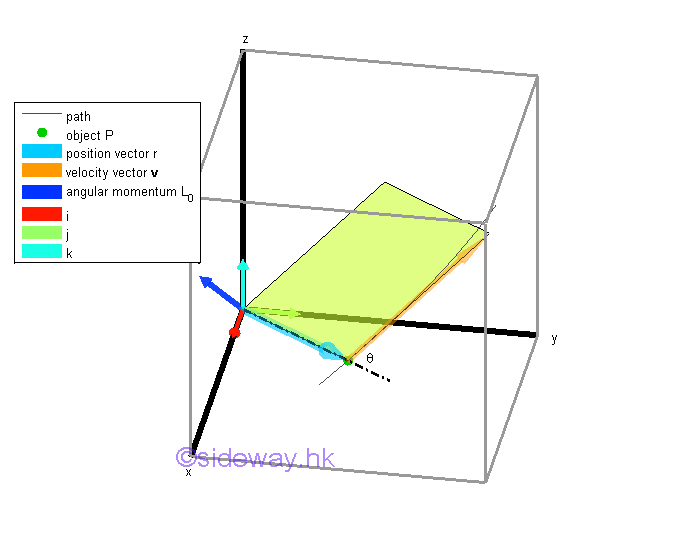
Angular momentum is defined as the moment of the momentum. When an object of mass m moving in space with respect to a newtonian frame of reference. the linear momentum of the object at any instant is equal to the instantanous velocity at the instant time the mass of the object. Similar to the moment of a force, angular momentum L0 of the momentum vector about O at a given instant is defined as the cross product of position vector and momentum vector of the object at the given instant. The magnitude is equal to the product of the momentum, p, along the line of linear motion and the perpendicular distance, d, between the line of linear motion of the momentum and the point of reference. Unlike the moment of a force in static measuring the tendency to rotate, angular momentum is a measure of the quantity of the intantaneous angular rotation of an object. Similar to moment of a force, angular momentum is also a vector quantity to indicate both the director and magnitude of the angular rotation.
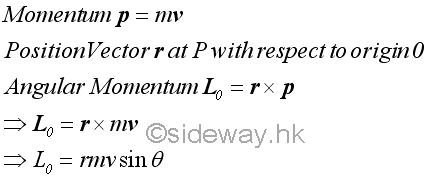
Angular Momentum in Space
Similar to moment of a force, angular moment about a reference point or axis in space can also be expressed in form of a determinant.
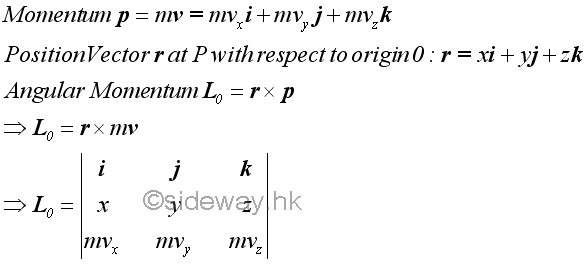
And the components of the angular momentum L0 about a reference point can also be expressed in term of the moments of the components of linear momentum about the coordinate axes. And is equal to
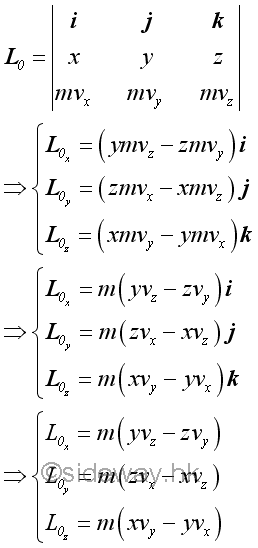
Sometime it is more convenient to consider the polar or spherical coordinate system instead of rectangular coordinate system.
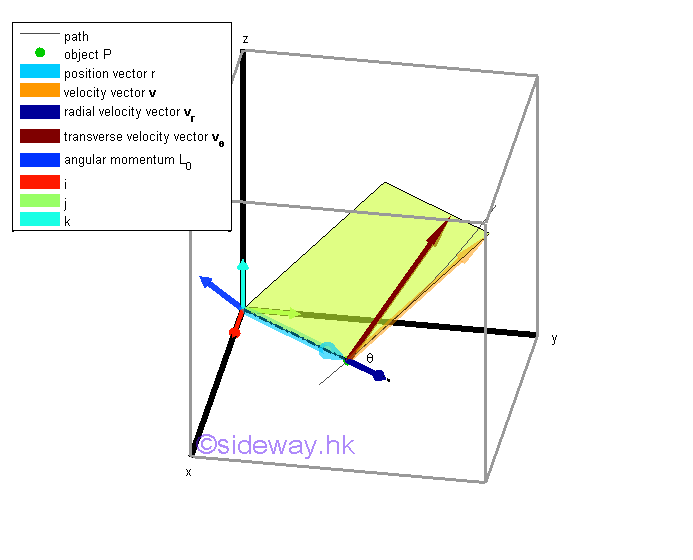
Angular Momentum in a Plane
Rectangular Coordinate System
When an object moves in a plane with rectangular coordinate, one velocity vector component and one position vector component of the object are equal to zero. Therefore two components of the angular momentum are equal to zero, the angular momentum becomes always perpendicular to the plane in which the object moves also.
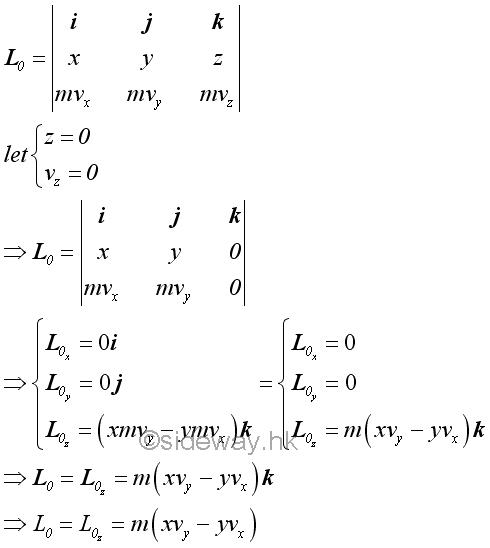
According to the right hand rule, the sense of a counterclockwise angular momentum about a reference point is positive, while the sense of a clockwise angular momentum about a reference point is negative.
Polar Coordinate System
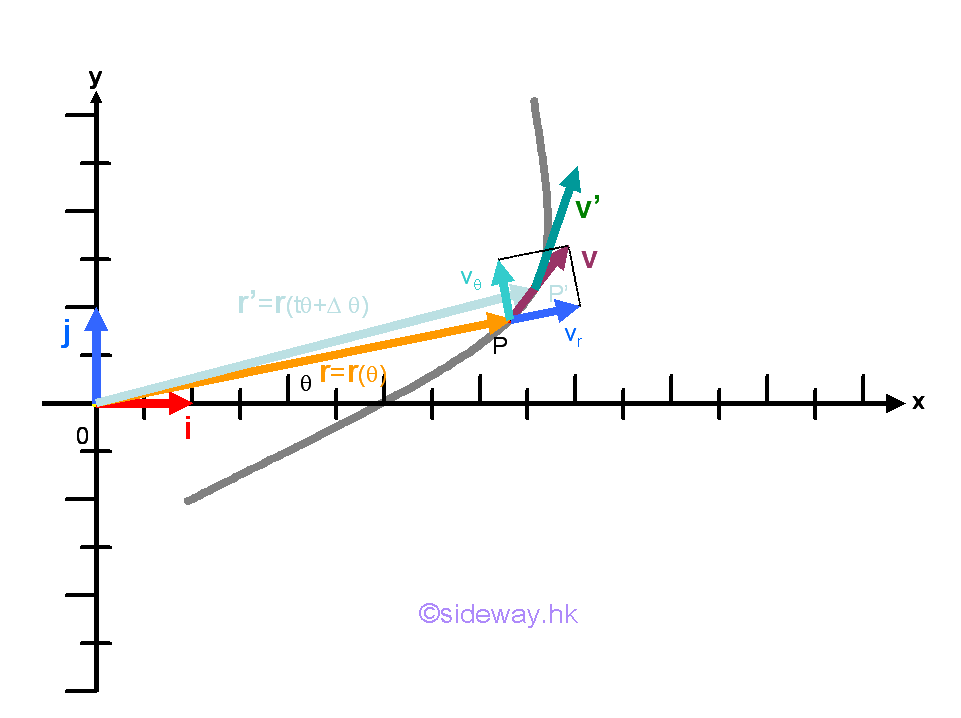
In case of using polar coordinates, the linear momentum of the object can be resolved into radial and transverse components. Since the radial component of the velocity vector is always collinear with the position vector, the angular momentum of the radial component of the linear momentum of object P is always equal to zero also. The angular momentum of object P about 0 is equal to the angular momentum of the transvers component of the linear momentum of object P only.
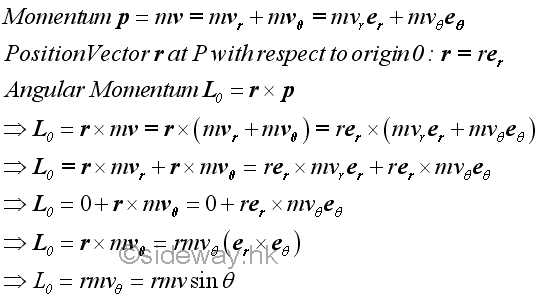
From kinematics, the transverse velocity of the object can be expressed in term of radial distance and rate of change of the polar angle.
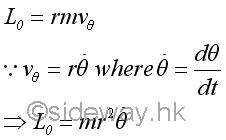
Moment
Resultant force acting upon an object is equal to the rate of change of the momentum of the object. Similarly, the resultant moment of an object about a reference point or axis is equal to the rate of change of the angular momentum of the object about the same reference point or axis. The rate of change of the angular momentum of the object about a reference point can be obtained by differentiation of the angular momentum of the object a bout the reference point with respect to time. Since both the position and velocity vectors are a function of time, the rate of chang of the angular momentum of an object is.
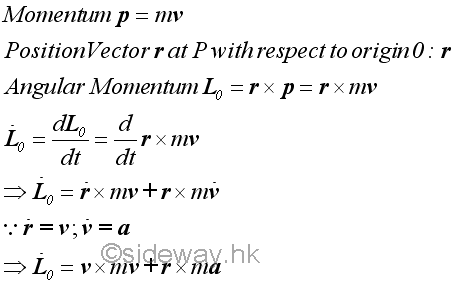
The first term of the left hand side expression is always equal to zero because the two vectors are always collinear. For the second term, by Newton's second law, the vector ma is equal to resultant force acts upon the object. And by the definition of moment, the second term of the expression is equal to the resultant moment of the object about the reference. Therefore, the rate of change of the moment of momentum, i.e. angular momentum, of the object about a reference point is equal to the resultant moment of the forces acting on the object about the reference point.
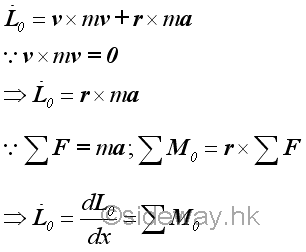
Equations of Kinetic Motion
The first equation of kinetic motion is derived from the rate of change of the momentum of an object. That is the resultant force is also equal to the rate of change of the momentum of an object.
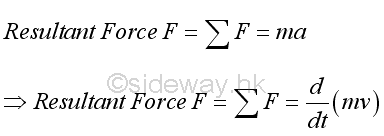
Similarly, another equation of kinetic motion can also derived from the rate of change of the angular momentum of an object by multiplying the force by the perpendicular distance from the rotating axis through the cross product. That is .
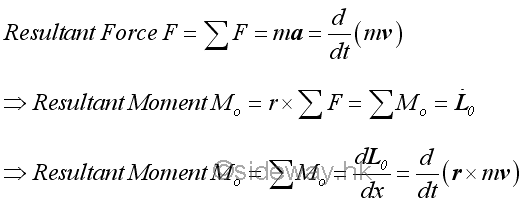
For example, force acting on an object can be resolved into radial motion with radial and transverse components when the object moves in a plane.
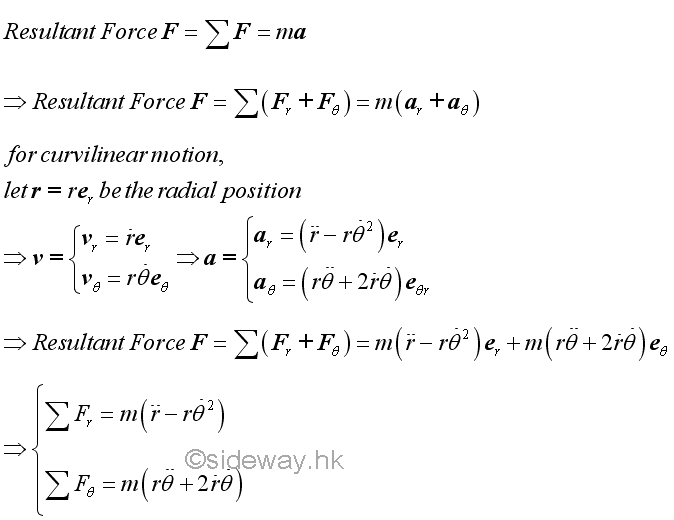
Similarly, moment of the object about a reference point can also be resolved into radial and transverse components accordingly when the object moves in a plane.
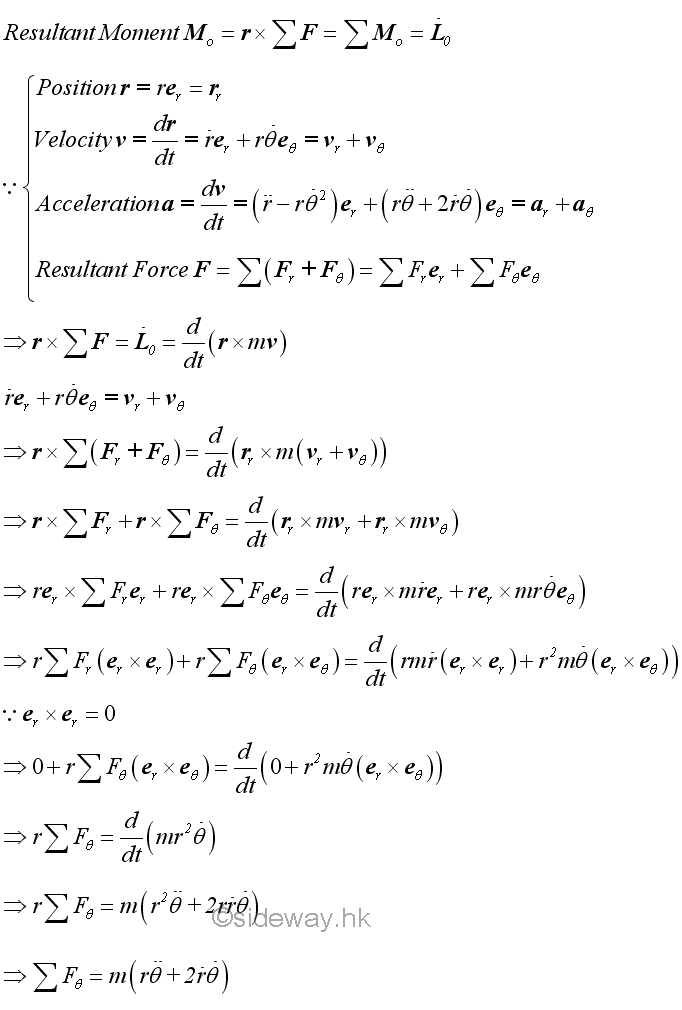
Dynamic Equilibrium
In general, resultant moment of an object is equal to zero in static equilibrium because resultant force is equal to zero. As the tenancy of an object to rotate about a reference point is equal to zero, the object can be either at rest or moving in constant velocity when an object is in static equilibrium also. Since the angular kinetic motion of an object can be expressed in terms of moment from the equation of kinetic motion, an equivalent negative moment vector can be added to the equation of kinetic motion to form an alternative form of equation of kinetic motion. Since the resultant moment is equal to zero, the alternative form of equation of kinetic motion can be considered as another equation of dynamic equibilibrium. That is
©sideway
ID: 140900005 Last Updated: 10/10/2014 Revision: 0 Ref:
References
- I.C. Jong; B.G. rogers, 1991, Engineering Mechanics: Statics and Dynamics
- F.P. Beer; E.R. Johnston,Jr.; E.R. Eisenberg, 2004, Vector Mechanics for Engineers: Statics
Latest Updated Links
- Rampage II Extreme(last updated On 8/23/2023)
- AVerMedia Live Gamer HD 2 - GC570(last updated On 7/16/2023)
- MagicPro ProHDTV(last updated On 7/15/2023)
- ROG STRIX Z690-A GAMING WIFI D4 CPU, BIOS, Chipset(last updated On 7/15/2023)
- Intel Core Processor(last updated On 7/14/2023)
- AVerMedia Live Gamer HD 2 - GC570(last updated On 7/13/2023)
- R2E Document(last updated On 7/11/2023)
- R2E Driver and Utility(last updated On 7/10/2023)
- R2E CPU, BIOS, Chipset(last updated On 7/9/2023)
- ASRock X58 Deluxe(last updated On 7/8/2023)
- ASRock X58 Deluxe(last updated On 7/7/2023)

 Nu Html Checker
Nu Html Checker  53
53  na
na  na
na
Home 5
Business
Management
HBR 3
Information
Recreation
Hobbies 8
Culture
Chinese 1097
English 339
Reference 79
Computer
Hardware 249
Software
Application 213
Digitization 32
Latex 52
Manim 205
KB 1
Numeric 19
Programming
Web 289
Unicode 504
HTML 66
CSS 65
SVG 46
ASP.NET 270
OS 429
DeskTop 7
Python 72
Knowledge
Mathematics
Formulas 8
Algebra 84
Number Theory 206
Trigonometry 31
Geometry 34
Calculus 67
Engineering
Tables 8
Mechanical
Rigid Bodies
Statics 92
Dynamics 37
Fluid 5
Control
Acoustics 19
Natural Sciences
Matter 1
Electric 27
Biology 1
